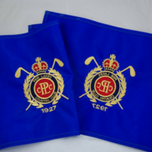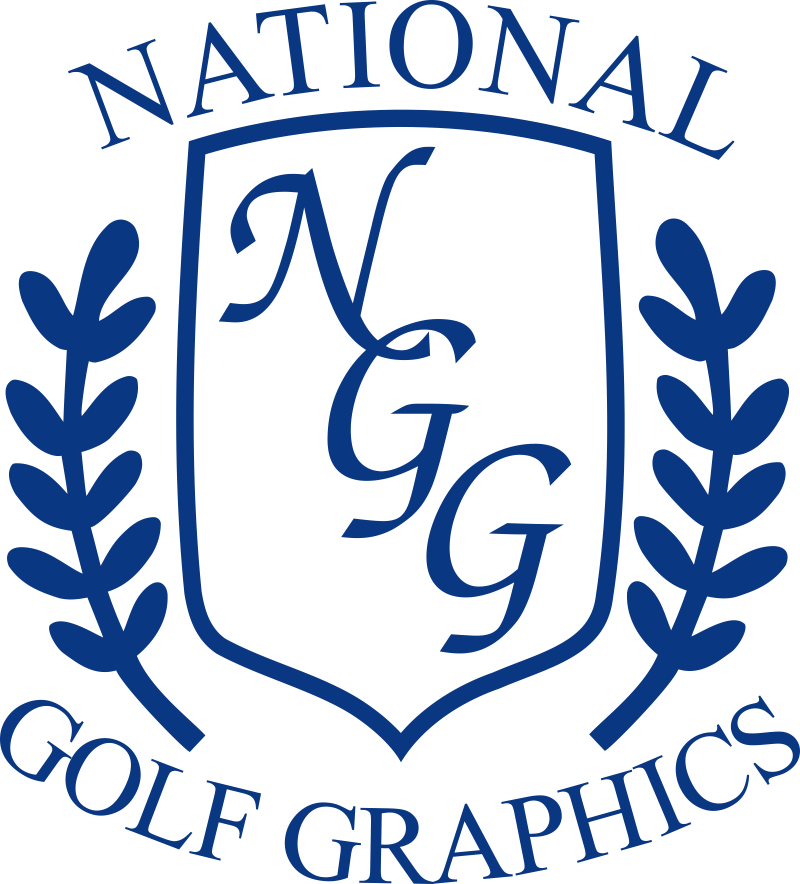
Finding Your Flag
Today we’re going to be discussing logoed flags. Ack! Sounds boring right? Well, it is (try writing about it). But, it’s something you all need. If you don’t have a budget for custom flags, it’s quite simple then, isn’t it? Just pick your colors, pick your tube, and you’re done. The quality of a plain flag will be the same no matter where you get it, so just consider pricing, lead times, and perhaps vendor loyalty (we LOVE our loyal customers!), and then make your purchase. That’s all easy, but no one’s reading this to get help with the easy stuff.
Anybody familiar with National Golf Graphics knows we’re a proponent of customizing products as a part of your overall branding strategy. Nowhere on your golf course will your guests be in closer contact to your logo than when they pull that flagstick out of the cup and gently (ah hemmm) lay that flag down on your green. I can’t tell you how many times playing partners of mine have commented on how nice a logo looks on the flags. Of course, custom products always come with choices, and flags are no exception to that. We’re going to help navigate you through those choices with this article today. This is going to be less about guidance, and more about making sure you’re aware of what’s available to you, arming you with the knowledge you need to make informed decisions. So, without further ado, let’s take a look at your logo options…
1. Embroidery

Reverse-Bobbin Stitching
How the sausage is made
Embroidery is a process where the logo is reproduced by stitching threads directly into the substrate (typically nylon). The stitching process is fully automated, performed by multi-headed embroidery machines. One of the great advantages of this process is that multiple items can be embroidered simultaneously, including graphics with many different thread colors. Why does this matter to you? This can save you money, particularly if your logo graphics have many colors.
The first step is to provide your logo file. A digital program is made from your logo in a process called ‘digitizing’. The digitized file is then uploaded to the embroidery software, instructing the machine what to stitch. Most embroidered flags use 400 denier nylon with reverse bobbin stitching, meaning the graphic will be seen in reverse from one side. If you want to avoid a reverse image of your logo, request a double-sided flag which involves sewing two flags back-to-back. Be aware that this doubles the weight of your flag, making it more difficult for your flag to fly, and resulting in more golf balls in the green side pond. The vast majority of embroidered flags are ordered single-sided with the logo appearing in reverse on the back side.
Benefits and drawbacks of embroidered flags
The obvious benefit to an embroidered flag is that it just looks great… when done properly, of course. It’s classy, and the 3-dimensional aspect can really make your logo pop. There’s an authenticity about embroidered flags that other logo processes can’t really capture. Now, understand that tiny detailed graphics and color gradients can be very difficult to replicate with embroidery, in which case it’s not always your best option. Embroidery is generally going to be more expensive than the alternatives, but remember multiple colors can be stitched simultaneously, so embroidery avoids the multiple setup fees that come with a process like screen printing. Rather, most suppliers will typically include only a single “digitizing fee” with embroidery orders, but it should be mentioned that National Golf Graphics is unique in that we handle all digital formatting internally, and therefore waive any ‘digitizing fees’ for our customers.
2. Screen printing
How the sausage is made
Screen printing is a process where your logo is reproduced by squeezing inks through mesh screens directly onto your flags. A separate mesh screen is required for each color in your logo, so designs with many colors cost more than simple one color designs. Like embroidery, the screen printing process has been partly automated, although the flags are individually loaded and unloaded by the operator. Once printed each item travels through a tunnel dryer which cures or sets the print.
Benefits and drawbacks of screen printed flags
Screen printing can handle more detail in your logos and graphics. Screen printed logos generally go on clean, and can just as easily be applied to 200 denier flags, cutting down on costs. Screen printing starts at a lower price point than embroidery and dye sublimation, but screen printing prices are determined by the number of colors required. So, if you have a many-colored logo, you may find prices increasing quickly on you. Keep that in mind when considering your budget. Lastly, screen printed graphics can’t match the durability of an embroidered logo, so probably plan on reordering screen printed flags a bit more frequently than embroidered flags.
3. Dye sublimation
How the sausage is made
Dye sublimation is a printing process requiring two steps. First, the custom graphics are digitally printed onto transfer paper as a mirror image of the original. The transfer paper is then inserted into a heat press, which sublimates the print into the fabric (usually polyester). Basically, the graphics are transferring onto the flag material from a gas to a solid without passing through a liquid stage.
Benefits and drawbacks of dye sublimated flags
If your needs meet one of the two following scenarios, dye sublimation can be a great alternative…
1) You’re purchasing flags for a specific event that requires a different graphic on each flag.
2) Your logo or graphic includes very subtle color gradients, which cannot be replicated in the embroidery or screen printing processes.
The great advantage of dye sublimation is that it can replicate any logo or graphic, no matter how detailed. Beyond that, we just don’t see much advantage when compared to screen printing. There’s no price advantage, no longevity advantage, and we just don’t think the logos look as good when pressed into the fabric. There’s just something nice about a logo that you can feel when you run your hands over it. This is personal preference, of course, but given the number of embroidered and screen printed flags on order versus dye sublimated flags each year, it would seem the vast majority agree.
Final steps…
Once you’ve determined the type of logo that best suits your facility, you’re going to have some remaining choices concerning flag designs, border styles, and mounting options. These are really about personal preferences more than anything else, so rather than go over all options here, I’m just going to suggest you ask suppliers what they have available for you. If you want to talk about some of these choices now, we actually DO love talking about this stuff. We offer 21 different design styles, four border options, and five different mounting options, so there’s plenty to discuss. Feel free to call us @ (877) 710-9363, or reach out through email: info@nationalgolfgraphics.com
As with all our article posts, we try to empower buyers with the knowledge we’ve gained as suppliers for nearly 30 years in this industry. We know flags aren’t a very sexy subject matter, but as I stated above… every course needs them. And, when a package of beautiful custom flags arrives at your doorstep, it actually feels pretty darn great!
-Peter Meyer
National Golf Graphics
